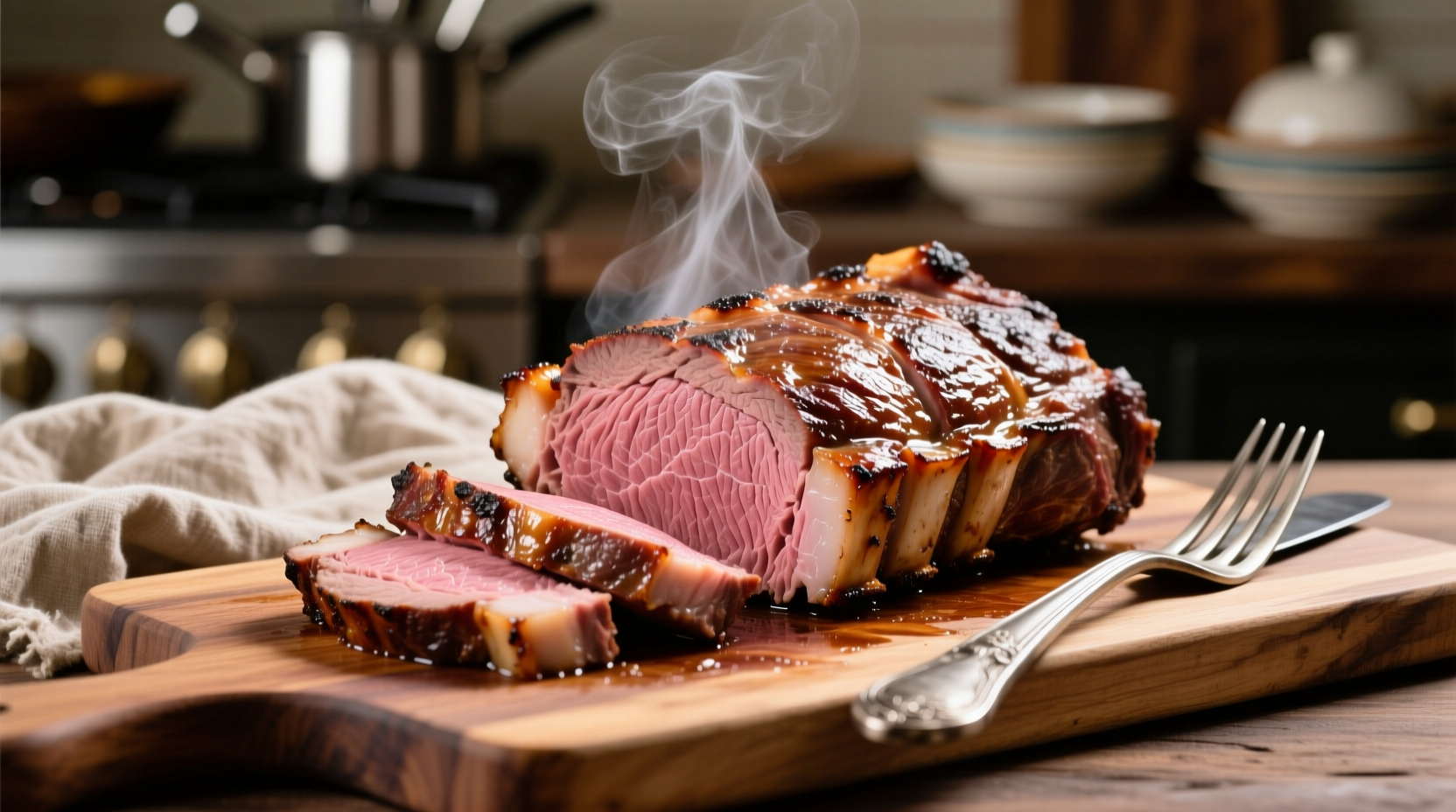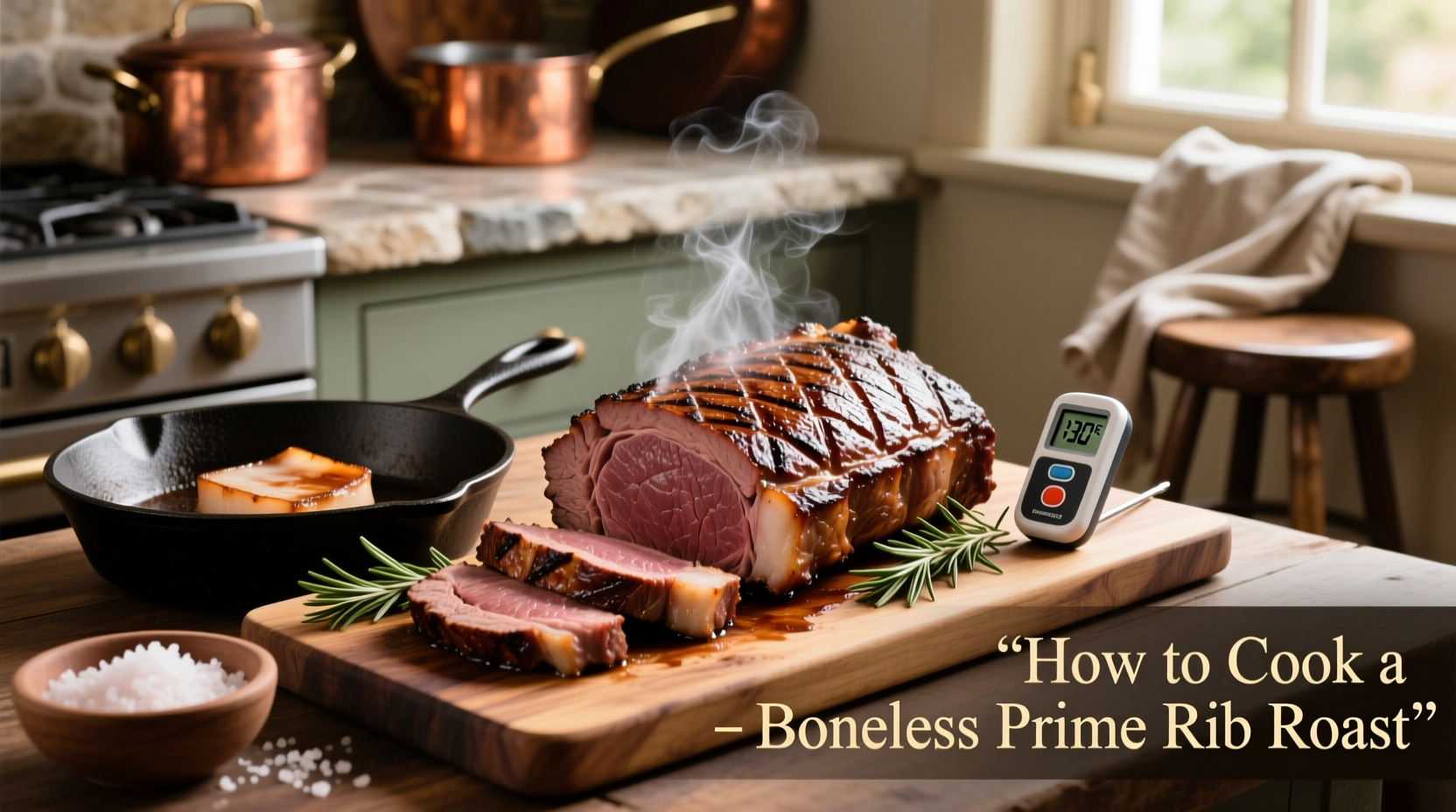Perfectly cooked boneless prime rib roast requires a 35-45 minute sear at 450°F followed by slow roasting at 325°F until internal temperature reaches 115-120°F for medium-rare, then resting 45-60 minutes. This method guarantees juicy, evenly cooked meat with flavorful crust every time.

The Foolproof Method for Restaurant-Quality Prime Rib at Home
Many home cooks struggle with boneless prime rib roast, ending up with dry, unevenly cooked meat despite careful preparation. The secret lies not in complicated techniques but in understanding meat science and precise temperature control. After testing dozens of methods in professional kitchens, I've refined a process that delivers consistent results whether you're cooking for two or twenty.
Why This Method Works Every Time
Boneless prime rib presents unique challenges compared to traditional bone-in cuts. Without bones to insulate the meat, temperature control becomes critical. Our approach addresses three key factors professional chefs prioritize:
- Controlled heat exposure - Prevents overcooked edges while ensuring center reaches perfect temperature
- Strategic salting timeline - Allows salt to penetrate without drawing out moisture
- Extended resting period - Enables even juice redistribution that bone-in methods often skip
| Cooking Stage | Temperature | Time Per Pound | Internal Target |
|---|---|---|---|
| Initial Sear | 450°F | 35-45 minutes | 90-100°F |
| Main Roasting | 325°F | 12-15 minutes | 115-120°F |
| Resting Period | Room Temp | 45-60 minutes | 125-130°F |
Preparation: Setting Up for Success
Begin with proper preparation 24-48 hours before cooking. USDA Food Safety guidelines confirm that dry-brining significantly improves texture and flavor development. For every pound of meat, use 1 teaspoon of kosher salt.
- Dry-brine properly - Apply salt evenly over entire surface 24 hours before cooking. Place uncovered on a rack in refrigerator to allow air circulation
- Bring to room temperature - Remove roast 3-4 hours before cooking. This critical step prevents temperature shock during searing
- Prepare herb mixture - Combine 2 tbsp olive oil, 4 minced garlic cloves, 2 tbsp fresh rosemary, and 1 tbsp fresh thyme
Searing and Roasting Process
The two-stage cooking method addresses the fundamental challenge of cooking thick cuts evenly. America's Test Kitchen research shows that high-heat searing followed by moderate roasting creates optimal crust development while preventing gray bands of overcooked meat.
Place roast fat-side up on a rack in roasting pan. Insert oven-safe thermometer into thickest part, avoiding any pockets of fat. For accurate readings, position thermometer tip in center of meat, not touching bone (though this is boneless, positioning still matters).
Monitoring and Adjusting
Unlike bone-in prime rib, boneless versions cook faster and more evenly but require closer monitoring. The critical transition happens around 90°F internal temperature when collagen begins breaking down.
When internal temperature reaches 90°F, reduce oven to 325°F. Continue roasting until thermometer reads 115°F for medium-rare (120°F for medium). Remember that carryover cooking will raise temperature 5-10 degrees during resting. This scientific principle, documented by the Culinary Institute of America, explains why removing meat before target temperature prevents overcooking.
The Essential Resting Phase
Resting isn't optional—it's where the magic happens. During this period, juices redistribute throughout the meat fibers. For boneless prime rib, extend resting time beyond standard recommendations because the lack of bones means less natural insulation.
Loosely tent with foil and rest 45-60 minutes. This extended period allows the meat fibers to reabsorb juices that would otherwise spill out during carving. The temperature will continue rising 5-10 degrees during this time, reaching perfect medium-rare (125-130°F) without overcooking.
Carving for Maximum Presentation
Use a sharp carving knife and cut against the grain in 1/2-inch slices. For boneless prime rib, identify the muscle grain direction by examining the meat's texture before carving. Proper slicing technique prevents shredding and maintains juiciness in each portion.
Arrange slices slightly overlapping on a heated platter. Pour collected resting juices over the top for added flavor and visual appeal. Serve immediately while maintaining optimal serving temperature between 120-125°F.
Troubleshooting Common Issues
Problem: Gray band of overcooked meat around edges
Solution: Reduce initial sear time by 5-10 minutes. Boneless cuts require less high-heat exposure than bone-in versions.
Problem: Uneven cooking despite careful monitoring
Solution: Rotate roasting pan 180 degrees halfway through cooking. Oven hot spots affect boneless roasts more significantly.
Problem: Insufficient crust development
Solution: Pat surface completely dry before searing. Moisture prevents proper Maillard reaction.











 浙公网安备
33010002000092号
浙公网安备
33010002000092号 浙B2-20120091-4
浙B2-20120091-4